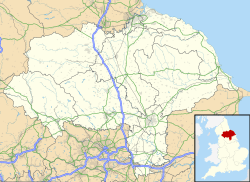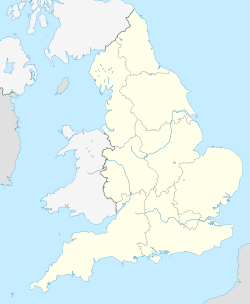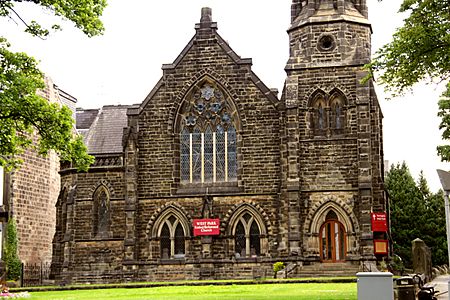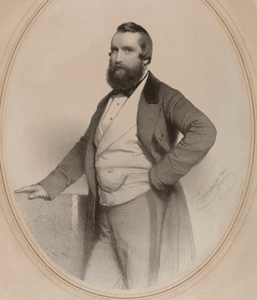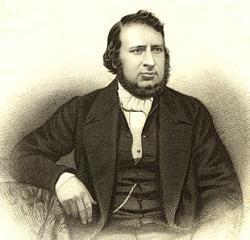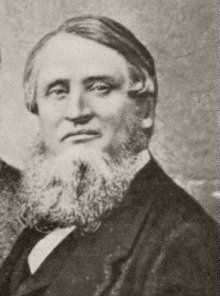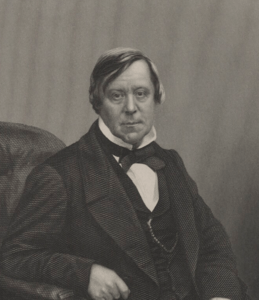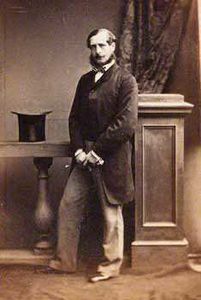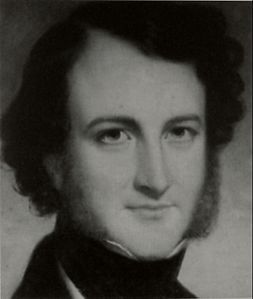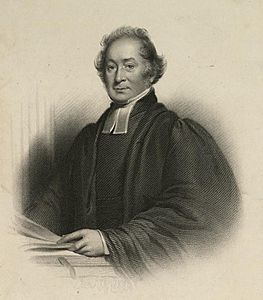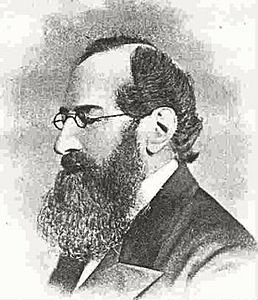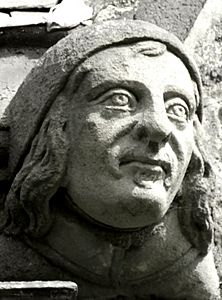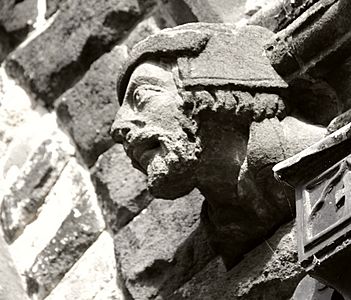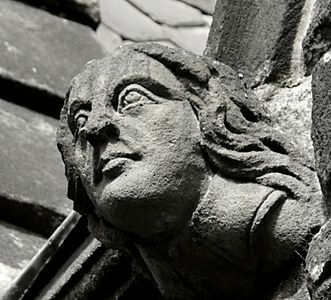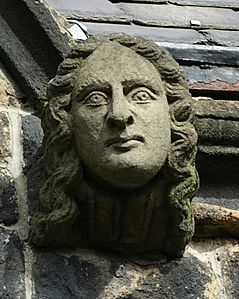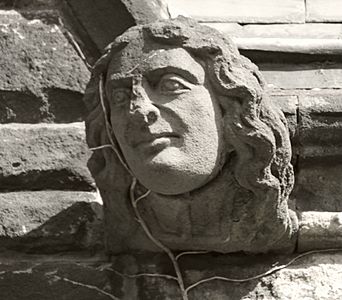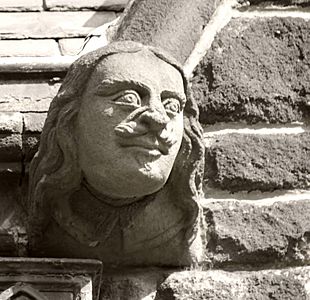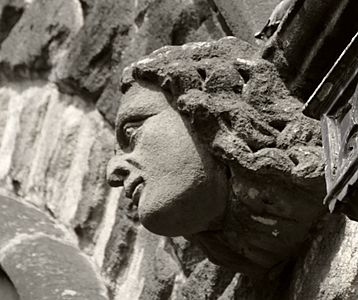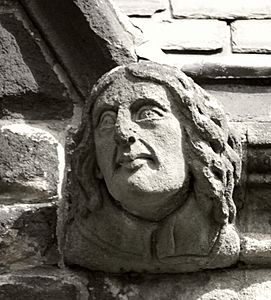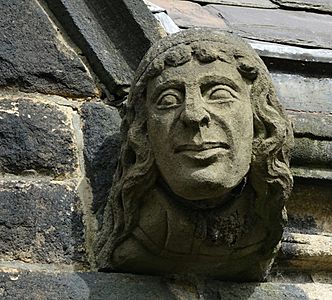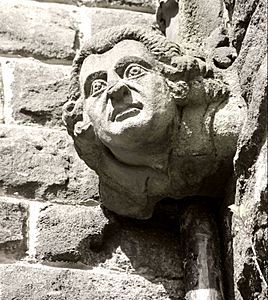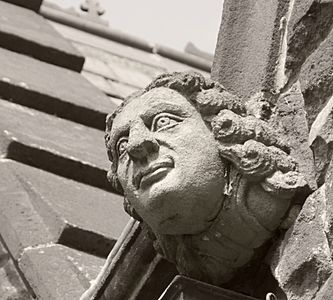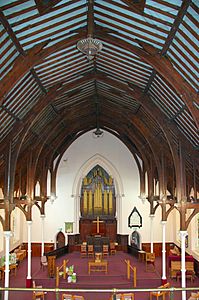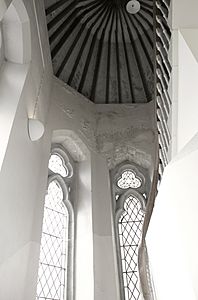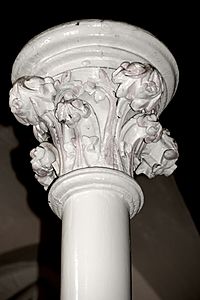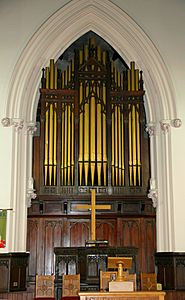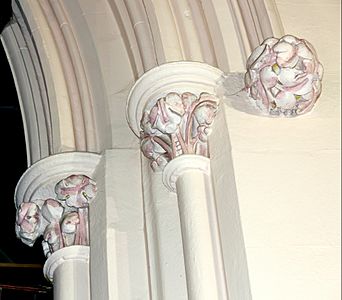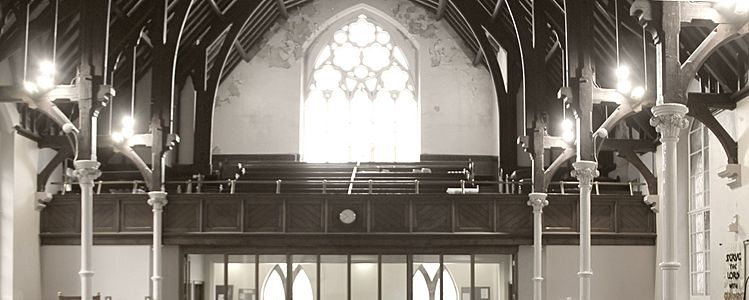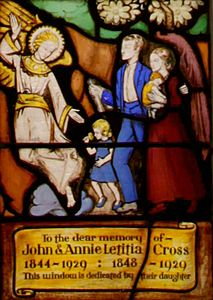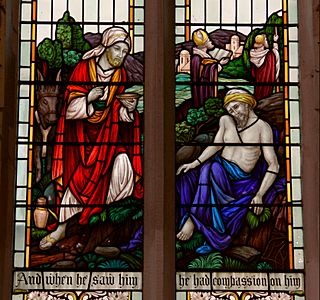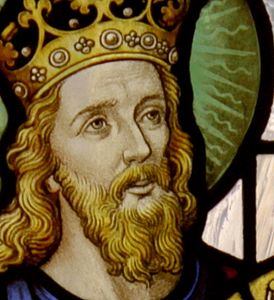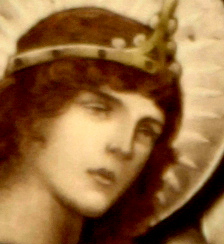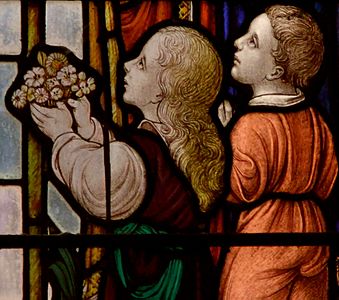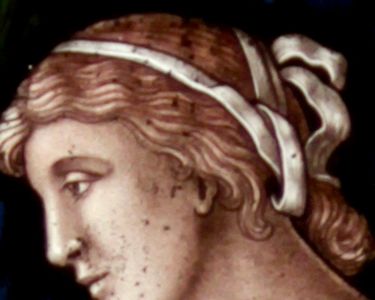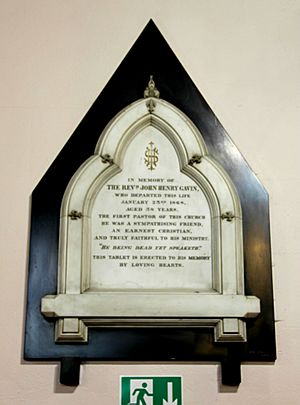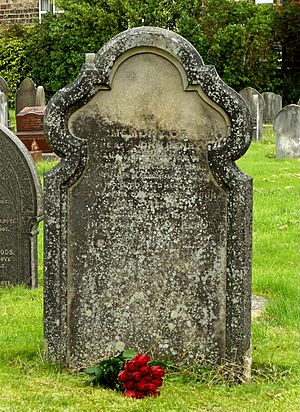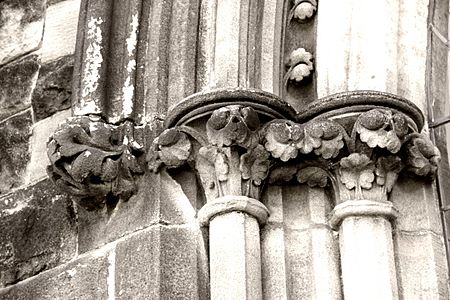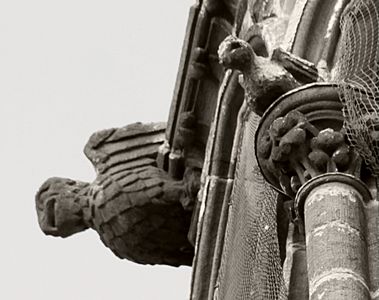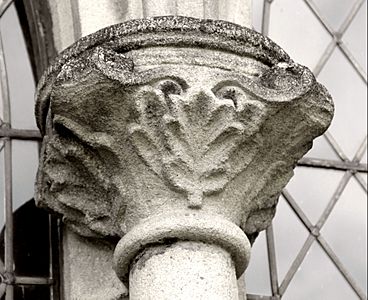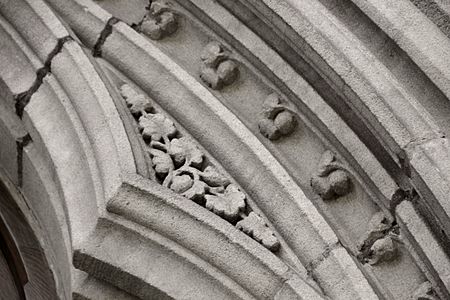West Park United Reformed Church, Harrogate facts for kids
Quick facts for kids West Park United Reformed Church, Harrogate |
|
|---|---|
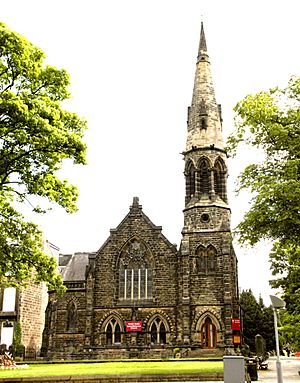
West Park United Reformed Church, Harrogate
|
|
| 53°59′27″N 1°32′26″W / 53.9907°N 1.5405°W | |
| Denomination | United Reformed |
| Website | www.harrogatewestparkurc.org.uk |
The West Park United Reformed Church is a special building in Harrogate, England. It is a Grade II listed building, which means it's an important historical place. The church was designed by architects Lockwood & Mawson. It was finished in 1862 and cost about £5,000 to build.
Originally, it was called West Park Congregational Church. It was built for the growing number of visitors coming to Harrogate by train. In 1972, it became a United Reformed Church.
Many important people have been connected to the church. Its first minister was Reverend John Henry Gavin. Sir Francis Crossley helped start the building. Even Tsarina Alexandra of Russia visited and worshipped here. The church has a large pipe organ and a bell in its tower. You can also see cool gargoyles and carved heads of famous historical figures on the outside walls.
Since July 2025, the building has been managed by North Yorkshire District Council. It is now also known as the West Park Centre and is used by the public.
Contents
History of the Church
Early Beginnings
In the early 1800s, people who were not part of the main church (called Nonconformists) met in homes. Later, they built small chapels like Hope Chapel and Providence Chapel. By 1859, the Providence Chapel was too small for everyone. So, they decided to build a much bigger church.
Building the Present Church
The current church building is a Grade II listed building. It faces The Stray in Harrogate. When it was finished in 1862, its tall spire could be seen from far away.
The idea for the church came from Robert Milligan. He wanted to build a grand church to attract visitors. Harrogate was becoming popular because of the new railway station. Developers bought land near the station to create Victoria Park. They planned to build impressive churches along Victoria Avenue. The West Park Congregational Church got one of the best spots. It was designed to hold 700 people.
Tsarina Alexandra of Russia visited Harrogate in 1894 and 1911. She attended services at this church. In 1972, the church joined with other groups to become the West Park United Reformed Church.
Laying the Foundation Stone
Work on the church started before the foundation stone was officially laid. This happened on August 14, 1861. A large crowd of people from Harrogate came to watch. Sir Francis Crossley, a Member of Parliament, laid the stone.
A special time capsule was placed under the stone. It contained documents, newspapers, and coins from that time. After the ceremony, there was a big meal and speeches. People also raised money to help pay for the church.
The Grand Opening
The church officially opened on August 13, 1862. The building was completely full for the first service. Many important Nonconformist leaders from Yorkshire were there. Reverend Thomas Raffles gave a powerful speech. People donated money to help pay off the church's building costs. Even after selling their old chapel, they still needed more funds. The visitors and committee members helped raise more money.
About the Building
Outside the Church
The church is built from strong, rough stone. It has buttresses and pairs of gargoyles. The design is inspired by the Decorated Gothic style. It has a tall, elegant spire that is about 130 feet (40 meters) high.
Originally, the church had three main doors. Now, the main entrance is through the tower on the west side. On the south wall, there are twelve carved heads of famous historical figures. These include Isaac Watts, John Bunyan, John Milton, and Oliver Cromwell. The roof is covered with special fishtail slates.
In 1999, a ramp was added for wheelchair access. In 2000, floodlights were installed to light up the church at night.
Carved Heads on the South Wall
Inside the Church
The main room inside is large, about 72 by 44 feet (22 by 13 meters). It is 38.5 feet (11.7 meters) high. The design helps the sound travel well, which is great for music. The roof is held up by iron columns.
The church has three memorials from the First World War. These include two stained glass windows and a brass plaque. There are also plaques for John Peel Clapham and the first minister, Rev. John H. Gavin.
Over the years, the inside of the church has been updated a lot. In 1993, the pulpit was removed. The area around the Communion table was changed for drama and music groups. The old restrooms were renovated. In 1994, the school rooms were modernized. In 1999, the floor levels were changed to make it easier for everyone to move around. The building was even split vertically to create an upstairs hall. This hall was fully modernized in 2002 and named the West Park Hall. Between 2012 and 2014, the heating was fixed, and the main area was updated.
Organ and Bell
The church has a wonderful James Jepson Binns pipe organ from 1894. It was moved here in 1993 from another church in Northampton.
There is also one bell in the tower. It was made in 1812 by Mears. This bell was originally from an older church called St John's. When St John's was taken down, the bell was moved to the Nonconformists' chapel. Then, in 1862, it came to the West Park Church. The bell is still rung on Sundays.
Stained Glass Windows
-
David window, around 1921.
-
Good Samaritan window, 1960s.
Ministers of the Church
Early Ministers
The Nonconformist movement in Harrogate began with William Howell in the early 1800s. Before the West Park building, ministers served at other chapels. These included Thomas B. Wildsmith, William Eltringham, and George William Conder.
Reverend John Henry Gavin
The first minister at West Park Congregational Church was John Henry Gavin. He was born around 1831 and passed away in 1868 at the age of 38. He had been sick with tuberculosis for some years.
Reverend Gavin was very loved by the church members. He was also respected by other Christians because he always helped with good causes. After he passed away, his wife, Mary Gavin, opened a boarding school for young ladies to support her children. A special memorial plaque was placed inside the church for him.
Ministers Through the Years
Many ministers have served the church since Rev. Gavin. Some of them include Frederick Fox-Thomas (1869–1889) and Joseph A. Meeson (1889–1896). Hewlett E. Coltman (1965–1981) was the minister when the church became the West Park United Reformed Church in 1970.
More recently, Reverend John Campbell was the minister from 2011 to 2017. As of 2019, the church was run by its Elders and guest ministers.
Recent Events and Community Use
In August 2012, the church celebrated two big milestones. It was 150 years since the building opened and 40 years since it became a United Reformed Church. They had a special meal, a flower festival, and a celebration service.
The church is known for helping different charities. In December 2017, they supported Baby Basics, a charity that helps new mothers. Donations from their gift service and profits from their coffee shop went to this cause.
In August 2019, the church hosted a Songs of Praise event. In September 2019, the finish line for the UCI Road World Championships was right in front of the church. The building was used for press conferences, which helped raise money for the church.
The church has a coffee shop called Stray View Coffee Shop. It supports about 40 different charities, including overseas missions and local projects like the Harrogate Homeless Project. The church also publishes a magazine called The Messenger.
Original 1862 Carvings
See also
- Listed buildings in Harrogate (Low Harrogate Ward)


